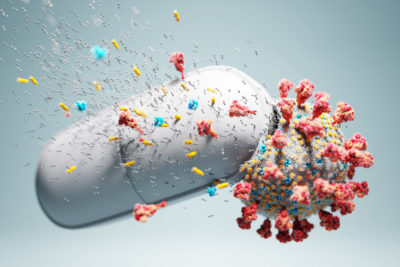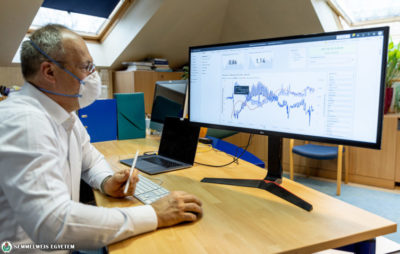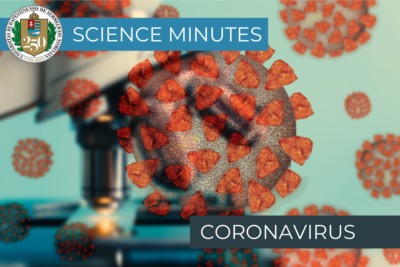Semmelweis University has established a research consortium to support the recently launched R&D activities in three main areas in the fight against the coronavirus. The aim of the work involving 11 units of the university, the Eötvös Loránd Research Network and the R&D companies related to the university is to explore the process of viral infection and the development of diagnostic, therapeutic and preventive procedures.
“We need to develop innovative diagnostic and therapeutic methods in the fight against the coronavirus pandemic to screen for infections early, to stop the spread of the virus and to treat patients. We need a multidisciplinary approach to research and development, meaning that the different disciplines, namely pharmacology, immunology, nanomedicine, infectology, genetics and clinical sciences including cardiology and pulmonology have to work together from basic research to patient care. Semmelweis University is ready to effectively mobilize the complex expertise, intellectual and infrastructural tools at hand in the fight against the coronavirus.”, said Dr. Péter Ferdinandy, Vice-Rector for Science and Innovation.
Consequently, the university has drawn up a set of proposals encompassing three areas and involving 11 units of Semmelweis University, the Eötvös Loránd Research Network and several R&D companies connected to the university in the R&D activities.
Part of the research aims to better understand the mechanism of infection and to test the efficiency of some drug candidates. These are in part various antiviral agents and substances against severe pneumonia or other damaged organs caused by the virus. This requires the modelling of the SARS-CoV-2 virus and COVID-19, the disease it causes. The information- and nanotechnology research groups of the university aim to create the in vitro infection-free model of the mechanisms of the coronavirus and set up animal experiments. Their research plans include the identification of the surface proteins of the virus, their bacterial or other production, the binding to the bacterial and synthetic membranes simulating the viral envelope. The generated research results may contribute to the development of a synthetic, liposome-based vaccine, however this requires research lasting between 6 months to one year in the current situation.
The diagnostic development module will use the state-of-the-art technologies at Semmelweis University, such as the Single-Photon Emission Computer Tomography (SPECT) and the Positron Emission Tomography to monitor the tissue distribution or the circulation kinetics of radiolabelled membrane vesicles expressing special metal-binding metalloprotease (OMV), or similarly labelled vesicles from other mammalian cells. This will enable researchers to observe which organs are attacked by the virus and in what order. Another experimentally confirmed method would allow the measurement of extracellular vesicles carrying micro-RNA molecules associated with the virus, in the blood of infected patients. This method may enable the detection of early infection and may predict the severity of the disease with a single blood sample.
The therapeutic module focuses on the so-called cytokine storm (when our immune system overreacts the infection) which is behind the severe acute respiratory syndrome (SARS), the most serious consequence of COVID-19, and the main cause of the extreme inflammatory reaction. The plans include the testing of drugs and drug candidates that are currently being tested in the university’s laboratories or are already on the market and are to inhibit the above mentioned adverse immune reactions. The testing of six substance types and specific drugs are recommended.
Pálma Dobozi
Featured image (illustration): Attila Kovács – Semmelweis University
Translation: Ágnes Raubinek


